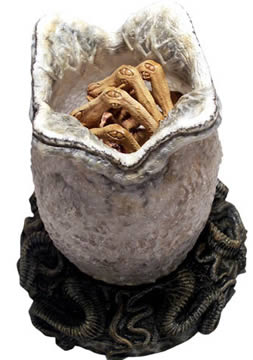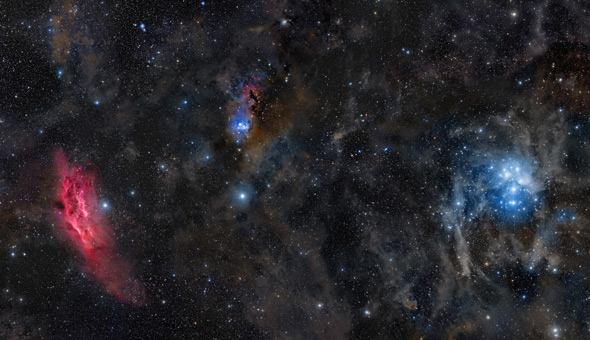De58te wrote: ↑Thu Mar 29, 2018 10:24 am
Ann, in the link (Herbig-Haro objects) it says, "NGC 2023 is illuminated by HD 37903, a B1.5V star (Sharpless 1952) and appears blue on colour photographs."
Okay, thanks!

I should have checked that!
A star of spectral class B1.5V is hot enough to ionize an emission nebula, but not a
bright emission nebula. So the rather faint red filaments in NGC 2023 may indeed be ionized by HD 37903.
The Iris Nebula, illuminated and ionized by B2Ve-type star HD 200775.
Photo; Adam Block/Caelumobservatory
O9.5Vvar-type star AE Aurigae ionizing and illuminating the Flaming Star nebula.
Photo: Rolf Geissinger.
Another well-known blue reflection nebula, the Iris Nebula or NGC 7023, is rather brightly illuminated and faintly ionized by B2Ve star HD 200775. So there is a prominent blue reflection nebula and faint wisps of emission nebulosity in NGC 7023.
The rather well-known Flaming Star Nebula is primarily an emission nebula, ionized by an O9.5Vvar type of star, AE Aurigae. AE Aurigae represents the very coolest O-type stars, but O-type stars are nevertheless hotter than any B-type star, and AE Aur is definitely hot enough to ionize a prominent red emission nebula. The blue reflection nebula next to the star is actually more remarkable, because O-type stars are so rarely surrounded by blue reflection nebulas. The reason why there is one here is that AE Aurigae is a runaway star that is just passing through, and its harsh O-type stellar wind and hard ultraviolet radiation have not yet had time to scatter and disintegrate the grains of dust in the molecular cloud that reflects the star's blue light.
So whether you get an emission or a reflection nebula is due to the temperature of the illuminating or ionizing star. At spectral class B1.5V, HD 37903, the ionizing star in today's APOD, is hot enough to do
some ionizing, but not a lot of it. The nebula NGC 2023 is therefore mostly a reflection nebula, and its color is predominantly blue.
Ann
 NGC 2023 in the Horsehead's Shadow
NGC 2023 in the Horsehead's Shadow


